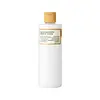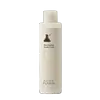What's inside
What's inside
 Key Ingredients
Key Ingredients

 Benefits
Benefits

 Concerns
Concerns

No concerns
 Ingredients Side-by-side
Ingredients Side-by-side

Oryza Sativa Bran Water
MaskingGlycerin
HumectantButylene Glycol
Humectant1,2-Hexanediol
Skin ConditioningWater
Skin ConditioningDiphenyl Dimethicone
EmollientTriethylhexanoin
MaskingBetaine
HumectantPolyglyceryl-10 Myristate
Skin ConditioningHydroxyacetophenone
AntioxidantArginine
MaskingAcrylates/C10-30 Alkyl Acrylate Crosspolymer
Emulsion StabilisingPanthenol
Skin ConditioningDipotassium Glycyrrhizate
HumectantEthylhexylglycerin
Skin ConditioningGlyceryl Polymethacrylate
Sodium Hyaluronate
HumectantDisodium EDTA
Carbomer
Emulsion StabilisingMethylpropanediol
SolventPotentilla Anserina Extract
Skin ConditioningPolyquaternium-51
Skin ConditioningCynara Scolymus Leaf Extract
Skin ConditioningAvena Sativa Kernel Extract
AbrasiveHydrogenated Lecithin
EmulsifyingBeta-Glucan
Skin ConditioningCamellia Sinensis Leaf Water
MaskingLactococcus Ferment Lysate
Skin ConditioningTocopherol
AntioxidantFructooligosaccharides
HumectantCentella Asiatica Extract
CleansingCyperus Rotundus Root Extract
Skin ConditioningHydrolyzed Hyaluronic Acid
HumectantEctoin
Skin ConditioningMannitol
HumectantPapain
Skin ConditioningOryza Sativa Bran Oil
EmollientOryza Sativa Extract
AbsorbentCeramide NP
Skin ConditioningPhytosphingosine
Skin ConditioningSodium Chloride
MaskingBromelain
Skin ConditioningPropanediol
SolventOryza Sativa Lees Extract
Skin ConditioningLactobacillus/Rice Ferment
Skin ConditioningProtease
ExfoliatingSucrose Distearate
EmollientCaprylic/Capric Triglyceride
MaskingSodium Phytate
Hydroxypropyl Cyclodextrin
MaskingSodium Dna
Skin ConditioningKojic Dipalmitate
EmollientOryzanol
Skin ConditioningLipase
Skin ConditioningOryza Sativa Bran Water, Glycerin, Butylene Glycol, 1,2-Hexanediol, Water, Diphenyl Dimethicone, Triethylhexanoin, Betaine, Polyglyceryl-10 Myristate, Hydroxyacetophenone, Arginine, Acrylates/C10-30 Alkyl Acrylate Crosspolymer, Panthenol, Dipotassium Glycyrrhizate, Ethylhexylglycerin, Glyceryl Polymethacrylate, Sodium Hyaluronate, Disodium EDTA, Carbomer, Methylpropanediol, Potentilla Anserina Extract, Polyquaternium-51, Cynara Scolymus Leaf Extract, Avena Sativa Kernel Extract, Hydrogenated Lecithin, Beta-Glucan, Camellia Sinensis Leaf Water, Lactococcus Ferment Lysate, Tocopherol, Fructooligosaccharides, Centella Asiatica Extract, Cyperus Rotundus Root Extract, Hydrolyzed Hyaluronic Acid, Ectoin, Mannitol, Papain, Oryza Sativa Bran Oil, Oryza Sativa Extract, Ceramide NP, Phytosphingosine, Sodium Chloride, Bromelain, Propanediol, Oryza Sativa Lees Extract, Lactobacillus/Rice Ferment, Protease, Sucrose Distearate, Caprylic/Capric Triglyceride, Sodium Phytate, Hydroxypropyl Cyclodextrin, Sodium Dna, Kojic Dipalmitate, Oryzanol, Lipase
Oryza Sativa Extract
AbsorbentWater
Skin ConditioningGlycerin
HumectantButylene Glycol
HumectantNiacinamide
SmoothingPentylene Glycol
Skin ConditioningCentella Asiatica Extract
CleansingFicus Carica Fruit Extract
HumectantAvena Sativa Kernel Extract
AbrasiveCynara Scolymus Leaf Extract
Skin ConditioningHydrogenated Lecithin
EmulsifyingCamellia Sinensis Leaf Water
MaskingDiphenyl Dimethicone
EmollientTriethylhexanoin
Masking1,2-Hexanediol
Skin ConditioningPolyglyceryl-10 Oleate
Skin ConditioningMethylpropanediol
SolventSodium Citrate
BufferingEthylhexylglycerin
Skin ConditioningHydroxyacetophenone
AntioxidantCitric Acid
BufferingDisodium EDTA
Polyquaternium-51
Skin ConditioningBeta-Glucan
Skin ConditioningHydrolyzed Rice Protein
Skin ConditioningCeramide NP
Skin ConditioningMannitol
HumectantBromelain
Skin ConditioningPapain
Skin ConditioningOryza Sativa Extract, Water, Glycerin, Butylene Glycol, Niacinamide, Pentylene Glycol, Centella Asiatica Extract, Ficus Carica Fruit Extract, Avena Sativa Kernel Extract, Cynara Scolymus Leaf Extract, Hydrogenated Lecithin, Camellia Sinensis Leaf Water, Diphenyl Dimethicone, Triethylhexanoin, 1,2-Hexanediol, Polyglyceryl-10 Oleate, Methylpropanediol, Sodium Citrate, Ethylhexylglycerin, Hydroxyacetophenone, Citric Acid, Disodium EDTA, Polyquaternium-51, Beta-Glucan, Hydrolyzed Rice Protein, Ceramide NP, Mannitol, Bromelain, Papain
 Reviews
Reviews

Ingredients Explained
These ingredients are found in both products.
Ingredients higher up in an ingredient list are typically present in a larger amount.
1,2-Hexanediol is a synthetic liquid and another multi-functional powerhouse.
It is a:
- Humectant, drawing moisture into the skin
- Emollient, helping to soften skin
- Solvent, dispersing and stabilizing formulas
- Preservative booster, enhancing the antimicrobial activity of other preservatives
Avena Sativa Kernel Extract is is derived from colloidal oatmeal. Besides being a healthy breakfast, oats have many benefits in skincare too.
This ingredient helps sooth, hydrate, and protect the skin. The starches in colloidal oatmeal are able to bind water, keeping the skin hydrated.
The cellulose and fiber in colloidal oatmeal help reduce inflammation. This can also help the skin feel softer.
Colloidal Oatmeal is also an antioxidant. Antioxidants protect our skin from free-radical damage.
Oatmeal also contains beneficial compounds:
This ingredient is created by mixing grounded oatmeal and a liquid base.
Learn more about Avena Sativa Kernel ExtractBeta-Glucan is a polysaccharide. It can be derived from the cell walls of seaweed, oats, yeast, and fungi. It hydrates the skin and helps boost your skin's natural barrier.
As an antioxidant, beta-glucan helps fight free-radicals. Free-radicals are molecules that may damage your skin cells, such as pollution.
Studies show this ingredient may be an effective wrinkle reducer as it can deeply penetrate into skin. It has also been show to help with wound healing.
Learn more about Beta-GlucanWe don't have a description for Bromelain yet.
Butylene Glycol (or BG) is used within cosmetic products for a few different reasons:
Overall, Butylene Glycol is a safe and well-rounded ingredient that works well with other ingredients.
Though this ingredient works well with most skin types, some people with sensitive skin may experience a reaction such as allergic rashes, closed comedones, or itchiness.
Learn more about Butylene GlycolCamellia Sinensis Leaf Water is a tonic and helps with masking.
Tonics are used to remove soap residues. They also help moisturize the skin.
Masking ingredients are used to obscure or block properties of other ingredients. They are commonly used to block the scent of a product.
Camellia Sinensis leaves contain antioxidants, anti-inflammatory, and anti-microbial properties.
Learn more about Camellia Sinensis Leaf WaterCentella Asiatica Extract (Centella) is derived from an herb native to Southeast Asia. It is famous for its anti-inflammatory and soothing properties.
Centella is rich in antioxidants and amino acids, such as Madecassic Acid and Asiaticoside.
Studies show the compounds in centella help with:
The combination of all these properties makes centella effective at soothing, hydrating, and protecting the skin.
Other great components of centella include Vitamin A, vitamin C, several B vitamins, and Asiatic Acid.
Fun fact: Centella has been used as a medicine and in food for many centuries. As a medicine, it is used to treat burns, scratches, and wounds.
Learn more about Centella Asiatica ExtractCeramide NP is a type of ceramide and formally known as ceramide 3.
Ceramides are intercellular lipids naturally found in our skin that bonds dead skin cells together to create a barrier. They are known for their ability to hold water and thus are a great ingredient for dry skin.
Ceramides are an important building block for our skin barrier. A stronger barrier helps the skin look more firm and hydrated. By bolstering the skin ceramides act as a barrier against irritating ingredients. This can help with inflammation as well.
If you would like to eat ceramides, sweet potatoes contain a small amount.
Read more about other common types of ceramides here:
Ceramide AP
Ceramide EOP
This ingredient is also known as artichoke leaf extract. Artichokes are a Mediterranean plant rich in antioxidants, vitamins, and minerals.
A 28-day manufacturer study with 22 women found:
Participants reported visible improvement and good tolerance.
Learn more about Cynara Scolymus Leaf ExtractDiphenyl Dimethicone is a type of silicone.
Disodium EDTA plays a role in making products more stable by aiding other preservatives.
It is a chelating agent, meaning it neutralizes metal ions that may be found in a product.
Disodium EDTA is a salt of edetic acid and is found to be safe in cosmetic ingredients.
Learn more about Disodium EDTAEthylhexylglycerin (we can't pronounce this either) is commonly used as a preservative and skin softener. It is derived from glyceryl.
You might see Ethylhexylglycerin often paired with other preservatives such as phenoxyethanol. Ethylhexylglycerin has been found to increase the effectiveness of these other preservatives.
Glycerin is already naturally found in your skin. It helps moisturize and protect your skin.
A study from 2016 found glycerin to be more effective as a humectant than AHAs and hyaluronic acid.
As a humectant, it helps the skin stay hydrated by pulling moisture to your skin. The low molecular weight of glycerin allows it to pull moisture into the deeper layers of your skin.
Hydrated skin improves your skin barrier; Your skin barrier helps protect against irritants and bacteria.
Glycerin has also been found to have antimicrobial and antiviral properties. Due to these properties, glycerin is often used in wound and burn treatments.
In cosmetics, glycerin is usually derived from plants such as soybean or palm. However, it can also be sourced from animals, such as tallow or animal fat.
This ingredient is organic, colorless, odorless, and non-toxic.
Glycerin is the name for this ingredient in American English. British English uses Glycerol/Glycerine.
Learn more about GlycerinHydrogenated Lecithin is created from the hydrogenation of lecithin (a group of phospholipids). Hydrogenation is a chemical reaction between hydrogen and another element.
This ingredient is an emollient and emulsifier. As an emollient, it helps soften skin by trapping moisture within. As an emulsifier, it prevents oil and water ingredients from separating.
Hydroxyacetophenone is antioxidant with skin conditioning and soothing properties. It also boosts the efficiency of preservatives.
This ingredient is not irritating or sensitizing.
Mannitol is a sugar alcohol. It is a humectant and moisturizes the skin. In vitro (not tested on a living organism), mannitol displays antioxidant properties.
When found in aqueous solutions, mannitol tends to become acidic. This is because it loses a hydrogen ion. This is why mannitol can often be found with pH adjusting ingredients, such as sodium bicarbonate.
Fun fact: Mannitol can be found in foods as a sweetener. It can be naturally found in mushrooms, algae, fruits, and veggies.
Learn more about MannitolMethylpropanediol is a synthetic solvent and humectant.
As a solvent, it helps dissolve other ingredients, helping to evenly distribute ingredients throughout the product. This ingredient has also been shown to have antimicrobial properties which makes it a preservative booster.
Methylpropanediol is able to add a bit of moisture to the skin. It also helps other ingredients be better absorbed into the skin, such as salicylic acid.
Learn more about MethylpropanediolOryza Sativa Extract comes from the rice grain, Oryza sativa. Rice extract has wound healing, antioxidant, anti-inflammatory, and hydrating properties.
Rice grains contain numerous antioxidants which may help with anti-aging, such as vitamin E. Antioxidants help stabilize free-radical molecules. Unstable free-radical molecules may damage your skin cells and accelerate signs of aging.
A study from 2002 found rice to help increase the rate of wound healing. The same study found an improvement of skin barrier function in the patients after taking rice baths.
Numerous in-vitro studies have found rice water to help decrease sun damage by increasing collagen production and inhibiting the process of tyrosinase.
Long story short- tyrosinase is an enzyme that controls melanin production. Our bodies start producing melanin (AKA tanning) when exposed to UV radiation to protect against damage. Rice water is found to partially block this process.
Though more research is needed on rice's ability to help with UV protection, recent studies seem promising.
Wondering why rice is hydrating? The protein in rice have emollient properties. Emollients create a barrier on the skin to trap moisture in, keeping your skin moisturized.
Some rice extract may have mildly-exfoliating properties. These are mainly limited to Oryza Sativa (Rice) Bran and Oryza Sativa (Rice) Germ Powder.
This rice was first cultivated in China over 10,000 years ago. Many cultures throughout Asia have used rice water on skin and hair for centuries.
Learn more about Oryza Sativa ExtractPapain is an enzyme found naturally in the papaya plant's leaves, fruit, and roots. It has antimicrobial, soothing, and wound healing properties.
Glycine and Vitamin A are naturally found in papain.
While papain is often touted as skin-lightening, further studies are needed to prove this. However, papain has been shown to help soothe acne-inflammation.
Papain belongs to a class of enzymes called proteolytic enzymes. These enzymes break down peptides and amino acids.
Some studies found papain to be a potential skin sensitizer and allergen. Those with latex allergies might also be allergic to papaya.
Learn more about PapainPolyquaternium-51 is a polymer salt. It helps hydrate the skin by creating a film on top. This film traps moisture in, keeping your skin soft and hydrated.
Triethylhexanoin is created from glycerin and 2-ethylhexanoic acid. It is a solvent and emollient.
As a solvent, Triethylhexanoin helps dissolve ingredients to stable bases or help evenly distribute ingredients throughout the product.
It is also an emollient and helps condition the skin.
Learn more about TriethylhexanoinWater. It's the most common cosmetic ingredient of all. You'll usually see it at the top of ingredient lists, meaning that it makes up the largest part of the product.
So why is it so popular? Water most often acts as a solvent - this means that it helps dissolve other ingredients into the formulation.
You'll also recognize water as that liquid we all need to stay alive. If you see this, drink a glass of water. Stay hydrated!
Learn more about Water